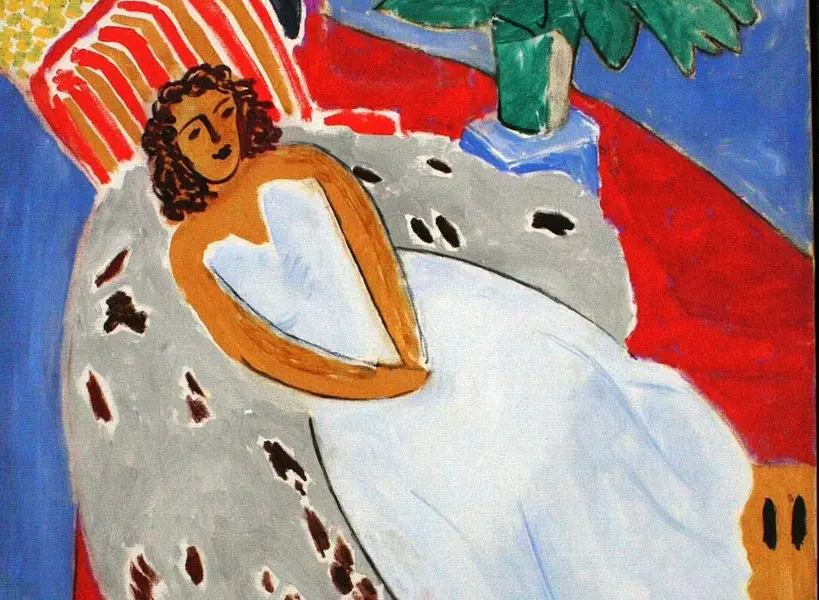
Для своих рисунков Анри Матисс (1869 — 1954) использовал широкий спектр средств — карандаш, древесный уголь, перо и чернила, иглы и кисти. Он делал наброски в записных книжках, на полях писем и, конечно же, на бумаге для рисования. Его эскизы предназначались как для живописных работ, так и для скульптур. Рисунки Матисса не только окружают, предшествуют, сопровождают и расширяют другие художественные формы его работы, но и представляют собой независимые элементы творчества.
На выставке представлены основные моменты художественного пути Матисса, сгруппированные в 14 тематических и хронологических секций. Экспозиция начинается с периода ученичества в начале XX века, раскрывает эскизы для часовни Розария в Вансе (1948 — 1949) и завершается последними шедеврами и кульминацией всей жизни художника.
Слева: Анри Матисс, «Большой красный интерьер» (1948). Национальный центр искусства и культуры Жоржа Помпиду, Париж
В экспозиции определены поворотные моменты в подходе Матисса к рисованию — от чёрных чернил или карандаша до оттенков белой бумаги, от мягких теней до ярких эманаций света на последних рисунках кистью. Тут можно увидеть и его эксперименты с цветом для живописных полотен, и работу над объёмами — для скульптур. Каждый выставочный зал предлагает диалог между рисунками и картинами, гравюрами и скульптурами. Работы вторят друг другу, и каждая вносит дополнительный штрих в атмосферу его мастерских. Это первая студия на набережной Сен-Мишель в Париже — с 1894 года, затем в Исси-ле-Мулино — с 1909 года, и, наконец, в Ницце — с 1918 года и до смерти в 1954 году. Небольшое исключение составляет период с 1943-го по 1948 годы, проведённый Матиссом в Вансе.
Слева: Анри Матисс, «Молодая женщина в белом (Лежащая модель в белом платье)» (1946). Лионский музей изобразительных искусств





















